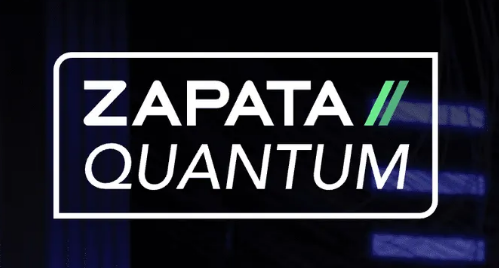Insider Brief
- Advances in quantum computing, like Google’s Willow chip, could eventually challenge Bitcoin’s security, but researchers argue the cryptocurrency’s open-source framework will enable it to adapt with quantum-resistant solutions.
- Bitcoin’s digital signatures and hash functions, the pillars of its security, may become vulnerable to quantum computing, prompting efforts to develop quantum-resistant algorithms like Lamport signatures.
- Transitioning to quantum-resistant systems would likely follow Bitcoin’s history of incremental updates, though challenges such as inactive addresses and potential oligopolies in mining remain key concerns.
The rise of quantum computing could one day threaten Bitcoin’s foundational security, but researchers believe the cryptocurrency will adapt.
Bitcoin’s security rests on two pillars: digital signatures and hash functions. These systems ensure the authenticity of transactions and the integrity of the blockchain. However, advances in quantum computing, such as Google’s recent developments in the Willow chip, have raised concerns about whether this technology could undermine Bitcoin’s safeguards. Korok Ray, a professor specializing in Bitcoin and game theory at Texas A&M University, addressed these concerns in a recent Forbes article.
While quantum computing has the potential to disrupt cryptocurrencies, Ray emphasized that Bitcoin’s open-source nature and proactive developer community make it uniquely suited to evolve. He writes that Bitcoin will adapt and adds that researchers are already exploring solutions to counteract quantum threats.

The Role of Digital Signatures
Bitcoin transactions rely on digital signatures to prove ownership of funds. These signatures use complex mathematical algorithms to ensure that only the rightful owner of a Bitcoin wallet can authorize transactions. Historically, Bitcoin used Elliptic Curve Digital Signature Algorithm (ECDSA), but the 2021 Taproot upgrade introduced Schnorr signatures, which are simpler, more private, and more efficient, according to Ray.
However, neither ECDSA nor Schnorr signatures are quantum-resistant. Quantum computers could theoretically break these systems by solving the underlying cryptographic problems exponentially faster than classical computers. To address this, researchers like Ray’s colleague, Juan Garay of Texas A&M, are investigating alternatives such as Lamport signatures, which are considered quantum-resistant.
Implementing a new signature scheme would likely follow the same path as Taproot, which was a backward-compatible “soft fork.” This means users could voluntarily migrate their funds to quantum-secure addresses without disrupting the entire network. However, inactive addresses, like those linked to Bitcoin’s pseudonymous creator Satoshi Nakamoto, pose a unique challenge. Decisions on whether to modify or restrict access to such addresses could lead to contentious debates, potentially requiring a hard fork—a divisive move in the Bitcoin community.
Threats to Hash Functions
Beyond digital signatures, Bitcoin’s security also depends on hash functions, particularly the SHA-256 algorithm, Ray writes. Hash functions compress data into fixed-size outputs, ensuring that even minor changes in input produce completely different results. This mechanism underpins both Bitcoin’s transaction system and its proof-of-work consensus mechanism, which validates new blocks and secures the blockchain.
Quantum computers could exploit SHA-256 vulnerabilities by finding “hash collisions” or reversing the hashing process, enabling them to manipulate blockchain data. In the worst-case scenario, a quantum computer might execute a 51% attack, allowing the attacker to rewrite blockchain history or double-spend coins.
However, Ray points out that the most economically rational use of a quantum computer in this context would not be to disrupt Bitcoin but to dominate Bitcoin mining. By leveraging its computational power, a quantum miner could consistently solve the mathematical puzzles required to add new blocks to the blockchain, sidelining traditional miners. This scenario would transform mining from a decentralized global industry into an oligopoly controlled by quantum-capable entities.
To mitigate this risk, Bitcoin developers could replace SHA-256 with a quantum-resistant hash function. Such an upgrade would require widespread consensus among miners and nodes but is technically feasible, given the cryptocurrency’s history of incremental improvements.
A Long-Term Challenge
Despite the theoretical risks, quantum computing’s impact on Bitcoin is not imminent. Building and scaling quantum computers capable of breaking Bitcoin’s cryptography remains a monumental task, still requiring advances in hardware and algorithms.
Moreover, as Bitcoin’s economic significance grows, so will the incentives to address quantum vulnerabilities. The open-source nature of Bitcoin fosters collaboration among cryptographers, developers, and academics, ensuring that solutions can be rigorously tested and deployed.
A Proactive Approach
While Ray believes the threat of quantum computing to Bitcoin is distant, its potential impact should still be considered, particularly the threat of a technical oligopoly or, perhaps dominated by a few technological behemoths, like Google or NVIDIA.
“To avoid this scenario, the easiest fix would be to install a quantum-resistant hash function in place of SHA-256. This is not out of the question, since Schnorr signatures themselves utilize hash functions,” Ray writes. “Therefore, a quantum-resistant signature scheme would need to be immune to hash functions.”

















